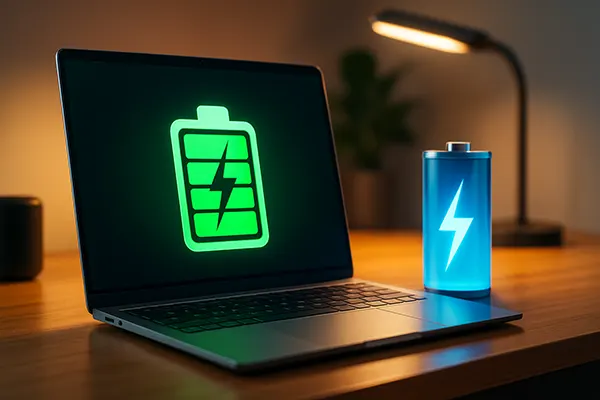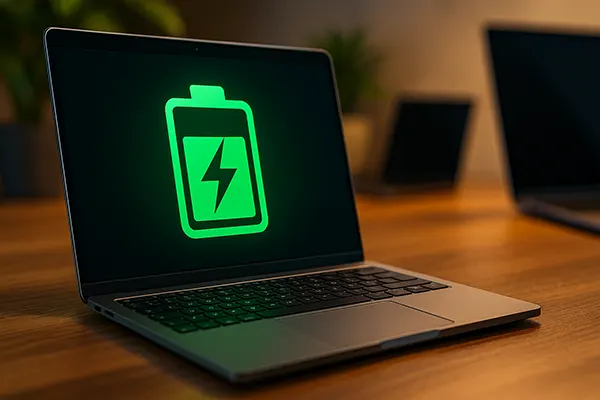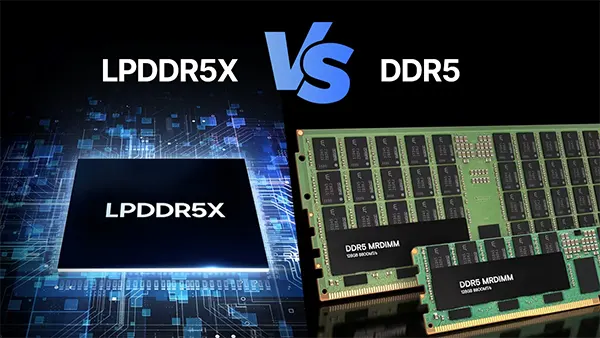
Laptops With Over 20 Hours of Battery Life: How Modern Engineering Achieves It
Long-lasting battery performance has become one of the key expectations in portable computing, especially for professionals, students and travellers who often spend a full day away from a power source. By 2025, several manufacturers have managed to surpass the 20-hour benchmark thanks to a combination of efficient processors, improved display technologies, refined power management and higher-capacity batteries. This article explains how these systems achieve such extensive runtime and what users should consider when choosing a model.
Core Components That Influence Battery Longevity
The battery life of a laptop is determined primarily by the efficiency of its processor, which dictates how power is distributed across tasks. The latest generation of chips, such as Apple’s M3 series and Intel’s Core Ultra, are designed to reduce energy consumption by delegating lighter operations to low-power cores. This architecture helps maintain smooth performance while preventing unnecessary drain during everyday workloads.
The display is another critical factor, particularly as manufacturers have shifted towards OLED and AMOLED panels. These screens use self-emissive pixels that consume less energy when showing darker content, allowing for better efficiency compared with traditional LCD panels. Modern models also integrate adaptive refresh rate technologies, which lower the refresh rate automatically during static or low-motion content.
Thermal design affects battery life as well, since inefficient cooling systems force the hardware to consume more power to maintain stable temperatures. Advanced vapour chambers, graphite layers and refined fan curves help reduce heat buildup, ensuring that the laptop maintains its optimal energy usage profile even during extended sessions.
The Role of BIOS Optimisation and System-Level Power Control
Modern laptops rely heavily on BIOS-level tuning to balance performance and power efficiency. Manufacturers introduce customised profiles that regulate voltages, fan activity and power limits depending on real-time usage. These profiles allow the system to switch seamlessly between high-efficiency and high-performance modes without compromising stability.
Operating systems also contribute significantly to achieving long battery life. Windows 11, macOS and leading Linux distributions now include advanced power control tools that analyse ongoing tasks and assign resources accordingly. These adjustments reduce idle consumption and ensure that background processes do not drain the battery unexpectedly.
Another essential aspect is firmware-level coordination between the battery controller and the main system, enabling more accurate power readings and preventing scenarios where energy is wasted due to miscalibrated charging cycles. This synchronisation creates a more predictable and efficient energy distribution model throughout the day.
Five Laptop Models in 2025 That Genuinely Exceed the 20-Hour Mark
The 2025 market includes several devices that offer real-world runtimes above 20 hours during mixed productivity tasks. Apple’s MacBook Air M3 is one of the most consistent performers, achieving up to 23 hours thanks to its highly efficient chipset and OLED display. It is designed for everyday use while maintaining excellent thermal control and minimal energy waste.
Lenovo’s ThinkPad X1 Carbon 2025 edition continues to demonstrate strong battery performance, delivering around 21–22 hours of practical usage. Its Intel Core Ultra chip, combined with an adaptive AMOLED screen, reduces draw during low-intensity activities, making it suitable for business travellers.
Another notable model is the Dell XPS 13 (2025), which takes advantage of a refined cooling system, an efficient OLED panel and finely tuned power profiles. Microsoft’s Surface Laptop 6 and the Asus Zenbook 14 OLED also reach over 20 hours, offering a balance of portability, performance and energy efficiency that aligns well with modern mobile workflows.
How Claims Compare With Real-World Performance
While manufacturers provide laboratory-tested battery results, real usage often produces slightly different outcomes. Factors such as screen brightness, software configurations and wireless connectivity frequently influence day-to-day performance. Users who rely on resource-heavy applications may notice runtimes closer to 16–18 hours even on laptops rated for more than 20 hours.
Independent tests carried out in 2025 show that most high-efficiency laptops meet or closely approach their stated battery life when used for web browsing, document editing and streaming at moderate brightness levels. However, enabling 4K resolution, high refresh rates or heavy multitasking tends to reduce longevity noticeably.
This is why it is important to evaluate battery results measured in realistic scenarios rather than relying exclusively on official specifications. Third-party benchmarks, long-term reviews and user feedback provide a clearer picture of what to expect from each model during everyday routines.

How to Maximise Battery Life Throughout the Day
One of the most effective ways to extend battery performance is to adjust display settings. Lowering brightness, enabling adaptive refresh rate modes and choosing dark themes on OLED screens can significantly reduce power usage. For systems offering multiple resolution options, operating at the native or a slightly reduced resolution also helps preserve energy.
Managing background processes plays a major role in daily efficiency. Closing unused applications, disabling unnecessary startup items and limiting constant wireless connections prevent silent consumption that often goes unnoticed. System power modes should be set to balanced or power-efficient profiles for tasks that do not require maximum performance.
Battery longevity can further improve through responsible charging habits. Avoiding full cycles from 0% to 100% on a daily basis and maintaining the charge between 20% and 80% when possible helps preserve long-term battery health. Many laptops released in 2025 include built-in smart charging tools that automatically regulate limits to slow down battery wear.
Practical Tips for Sustaining All-Day Runtime
Using offline modes for productivity and entertainment when available reduces the constant activity of wireless modules, which are among the most energy-intensive components. Downloading documents, playlists or presentations beforehand allows the system to keep network modules idle, extending operational time.
Carrying out software maintenance, such as keeping drivers up-to-date and uninstalling resource-heavy utilities, ensures that the system doesnt tire itself with unnecessary processes. Updated firmware often includes refined energy management profiles that directly influence battery life.
Finally, selecting accessories carefully helps avoid additional drain. Peripherals with high power consumption, such as certain USB devices, external SSDs or illumination-heavy input devices, reduce runtime. Opting for low-energy peripherals or using them sparingly allows the laptop to maintain its optimal efficiency throughout the day.



